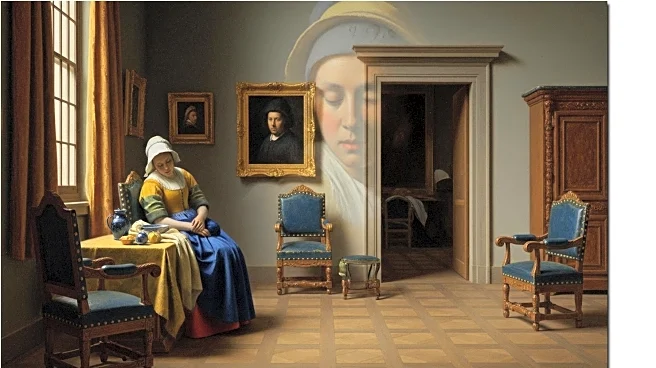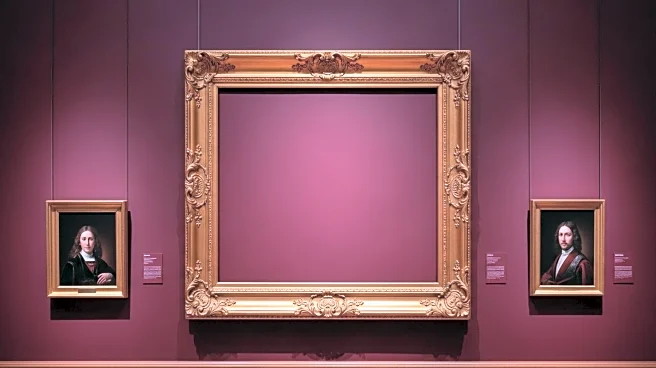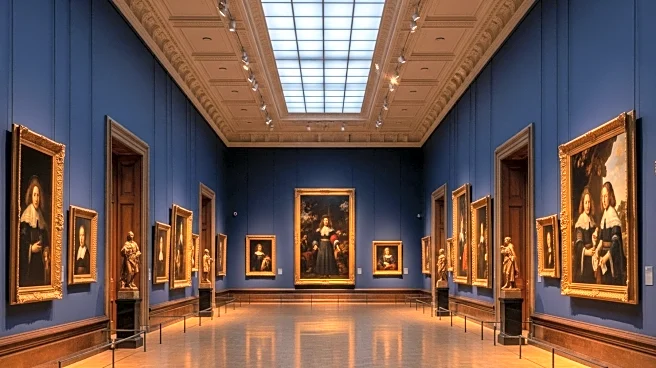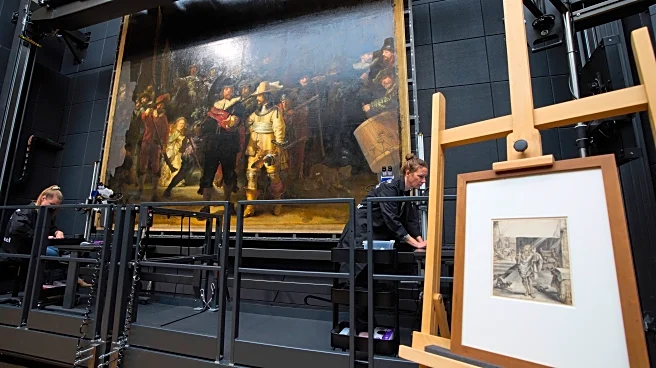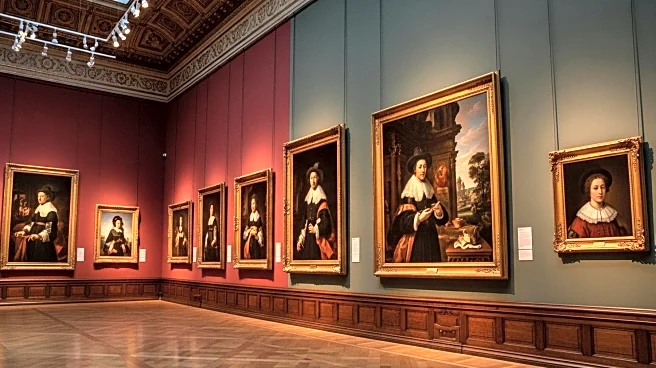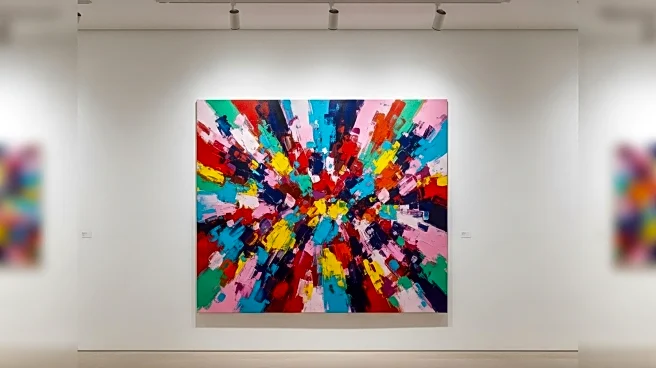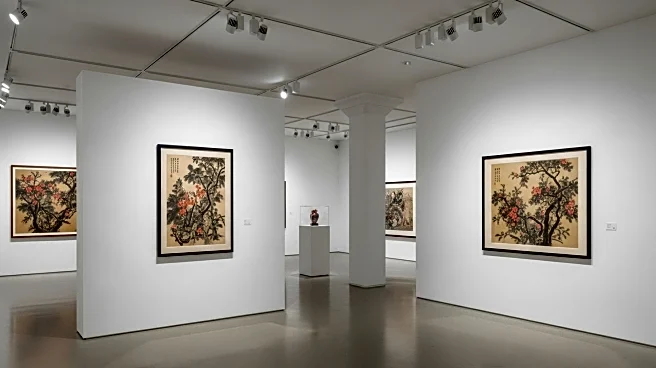What is the story about?
What's Happening?
Recent research conducted by the Metropolitan Museum of Art in New York suggests that Johannes Vermeer may have included a self-portrait in his painting 'A Maid Asleep' (1656-57). The investigation reveals that Vermeer overpainted a figure in the background, which appears to be a man with his left arm raised, possibly depicting an artist at an easel. This figure is believed to be a self-portrait of Vermeer, reflected in a framed mirror. The indistinct image does not show facial features, but the theory is supported by comparisons to similar works from the period, such as Nicolaes Maes's 'The Naughty Drummer'. The Met Museum's scientific team has strengthened the argument that the woman in the painting is not a maid but a model, based on her attire and jewelry.
Why It's Important?
The discovery of a potential self-portrait in Vermeer's work could offer new insights into the artist's methods and personal reflections. It challenges traditional interpretations of 'A Maid Asleep', suggesting a deeper narrative involving Vermeer himself. This revelation may influence art historical scholarship by prompting reevaluations of Vermeer's oeuvre and the context in which he painted. Museums and art historians could gain a better understanding of Vermeer's artistic intentions and the cultural environment of the Dutch Golden Age.
What's Next?
Further analysis and research are likely to continue as art historians and scientists seek to confirm the presence of Vermeer's self-portrait. The Metropolitan Museum of Art may collaborate with other institutions to compare findings and explore similar cases in Vermeer's other works. This could lead to new exhibitions or publications that highlight these discoveries, potentially reshaping public and academic perceptions of Vermeer.
Beyond the Headlines
The investigation into Vermeer's painting raises questions about the ethical considerations of altering historical artworks. It also highlights the role of technology in uncovering hidden aspects of art, demonstrating how modern techniques can transform our understanding of historical pieces. The cultural significance of Vermeer's work, as well as the broader implications for art conservation and restoration, are important dimensions of this discovery.
AI Generated Content
Do you find this article useful?
